Research on the floating performance of a novel large caliber machine gun based on the floating principle with complicated boundary conditions
2019-10-31YeLuKedongZhouLeiHeJunsongLiXueyingHung
Ye Lu ,Ke-dong Zhou ,*,Lei He ,Jun-song Li ,Xue-ying Hung
a School of Mechanical Engineering,Nanjing University of Science and Technology,Nanjing,210094,Jiangsu,China
b No.208 Research Institute of China Ordnance Industries,Beijing,102202,China
c 63856 Unit of PLA,Baicheng,137001,Jilin,China
Keywords:Large caliber machine gun Floating performance Dynamic analysis Firing elevation
A B S T R A C T In this paper,a novel large caliber machine gun was taken as the research object to analyze the floating technique based on the principle of fixed-point constraint and secondary counter-recoil.A rigid-flexible coupling multi-body dynamic model of the large caliber machine gun with muzzle brake based on floating principle was established,in which the influence of soil and human body was taken into account.The dynamic simulation was conducted and then the results were compared with the corresponding experimental data The dynamic characteristics of the machine gun with or without floating technique were analyzed to indicate the influence of floating technique upon the performance of the gun.Furthermore,the rigid-flexible coupling dynamic models with five different firing angles was constructed to study the influence caused by the angles.The results indicated that the floating mechanism could reduce the recoil effectively and improve the operational performance of this novel large caliber machine gun.
1. Introduction
The large caliber machine gun plays an important role in the current weapon and equipment system of infantry squad for its long range and strong power.But when the gun fires with tripod,the powerful recoil could usually lead to the deformation of tripod and violent oscillatory motion of the machine gun system.As a result,the firing state is uncontrollable and the jerking motion of muzzle along height direction is particularly evident.Therefore,it is important and meaningful to study how to reduce the recoil of large caliber machine gun for a better accuracy under the premise of ensuring the power.
The floating technology[1]is a kind of method to make the weapon fire at the floating body's counter-recoil period except the first firing.Its principle can be expressed as:during the firing,the stroke of floating body is always between the distance of largest recoil and counter-recoil positions to ensure that the floating part and the fixed part against collision.Nowadays,the floating technique has been widely used in small-caliber artillery to reduce the recoil and improve the firing accuracy dramatically.For example,the Swiss KBA and KBB 25 mm automatic artillery and LBD 35 mm automatic artillery used a floating mechanism with spring and hydraulic device.The floating technology was also used at the Mauser Model E 25 mm automatic artillery,Model F 30 mm automatic artillery and the US GAU-13/A 30 mm automatic artillery[2].However,the application of floating technology to the infantry automatic weapons is still at the research stage,and there is no mature application case so far.
In the past,Yao et al.firstly applied the floating technology to the large caliber machine gun by establishing a dynamic system testing on automatic mechanism[3].Wang et al.simplified the floating mechanism as two degrees of freedom spring-mass model and proposed an optimal design method to properly match the relation between floating mechanism configuration parameters and automatic mechanism kinematic parameters[4].Xu et al.considered the automatic action of a caseless rifle as a multi-rigid body system,and established the dynamic model for automatic action by applying the Newton-Euler's law to analyze the motion state,energy transfer relationships,and work characteristics were analyzed by using this model[5].Wang et al.studied the dynamic parameter matching in a caseless rifle and derived the laws of influence of parameters concerning the rifle's performance when firing at bursts of three rounds[6].Cao et al.gave a method on the simulation of the floating automat of artillery which can improve the veracity of simulation especially in the analytic process of vibration response of artillery system[7].Current study mostly focused on the theoretical research and simulation analysis and seldom involve the particle application or experimental verification.So there are still many technical difficulties such as precise control of the firing time and position,parameter matching of the floating mechanism,etc.
Some domestic and foreign scholars have also studied the dynamic characteristics of automatic weapons.Platek described investigations carried out to verify a loading mechanism of a newly designed modular assault rifle MSBS-5.56[8].Malachowski presented a research methodology used to determine the causes of a cartridge case extractor in a newly designed 5.56 mm assault rifle[9].Fenili investigated the angular position and vibration control of a nonlinear rigid-flexible two link robotic manipulator considering fast angular maneuvers[10].The three dynamic models such as multi-rigid-body model, rigid—flexible coupling model, and rigid—flexible coupling model with equivalent hydraulic cylinder were built to study the dynamic characteristics of boom system by Tang[11].WANG et al.built a rigid-flexible coupling virtual prototype model of the multi-body impact system by using the multibody dynamics software Virtual Lab[12].
In this paper,the floating scheme which can apply to a new large caliber machine gun was firstly designed based on the floating principle,with the introduction of the measurement indexes of the floating performance.Then the rigid-flexible coupling multi-body dynamic model of the new large caliber machine gun was established under the consideration of the influence caused by the flexible deformation and the complicated boundary conditions such as soil,human body and the muzzle brake.The dynamic simulation of the machine gun was conducted and the results were compared with experimental data to verify the reliability of the model.After that,the parameters used for measuring the performance of the floating mechanism were calculated.Based on this,the influence of floating technology on the machine gun was analyzed by comparing the dynamic characteristics under the condition of with or without floating mechanism.At last,floating performances at five different firing elevations were analyzed and the results demonstrated the reliability and stability of the machine gun with the designed floating mechanism.
2. Floating technology
2.1. Floating scheme design
The internal receiver of some new large caliber machine guns connects with the barrel by rigid coupling,and with the external receiver by floating spring coupling.The front buffer spring and back buffer spring is set on the external receiver so that the internal receiver floats back and forth in the external receiver.In the meanwhile,the bolt and bolt carrier moves to and fro in the internal receiver.When the floating body counter-recoils to a fixed position relative to the external receiver,the positioning ramp of the external receiver is constrained with a hook set on the internal receiver,namely,the fixed-position constraint is achieved.The hook is released when the bolt carrier counter-recoils to this position,then the floating body begins to counter-recoil for thesecond time.The bolt carrier subsequently hits the bolt and completes the locking and firing action which means that the advancing primer ignition is achieved.The spring coefficients and the mass of main members are shown in Table 1 and Table 2.

Table 1 The spring coefficients and preload.

Table 2 The mass of main members.
The technology of fixed-point constraint and secondary counter-recoil divides the counter-recoil process into two sections,which keeps the initial position of the floating body when it begins to counter-recoil to ensure the consistency of the floating body's position at firing and improve the stability of the floating process.Therefore,the stable fixed-position and fixed-velocity advancing prior ignition is achieved.The structure diagram of the floating body is shown in Fig.1[13].
2.2. The measurement indexes for the floating performance
The floating performance of floating mechanism is directly related to the usability of the machine gun.During the designing process of automatic weapon,there are many measurement indexes for the performance of the floating mechanism,such as the mean square deviation of the initial first-recoil displacement of the floating body σy0,the average value of the maximum recoil force of each fire,the maximum recoil force of the first fire Rmax,the mean square deviation of the counter-recoil displacement σyand velocityat firing.In this paper,the following parameters are selected as the measurement indexes for the floating performance.
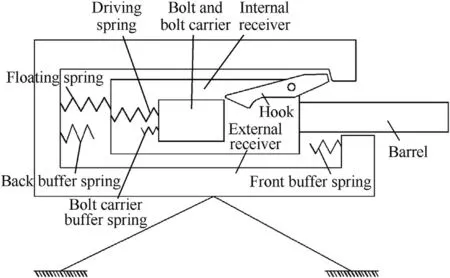
Fig.1.Structure sketch map of main component 1—floating spring,2—driving spring,3—bolt and bolt carrier,4—internal receiver,5—hook,6—barrel,7—front buffer spring,8—external receiver,9—bolt carrier buffer spring,10—back buffer spring.
(1)Stability of the Floating Motion.This means that the firing position of each fire is stabilized in a certain range and the narrower the range is,the higher the stability of the floating motion is.It is the chief index because the stability of the floating motion directly effects the firing dispersion extent,reliability and other floating performance of the floatingtype machine gun.A new large caliber machine gun,with whole-gun-floating principle is required to fire at the fixed position and fixed velocity.Therefore,in this paper,the mean square deviation σyand σ ˙y of the floating body at firing are selected as the judgment indexes to reflect the errors of the displacement and velocity of the machine gun at firing in a running fire:
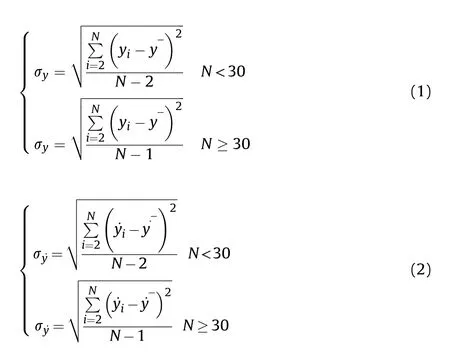
where,yiis the displacement of the floating body at each firing,=is the velocity,
(2)The maximum recoil displacement S1and counter-recoil displacement S2of the floating body. The maximum displacement of recoil and counter-recoil of the floating body are unable to exceed the maximum value provided by the weapon subject to the size of the structure,which can avoid a rigid impact between the gun body and the floating base.According to the structure of the considered machine gun,the maximum recoil displacement is limited to 0.021 m and the maximum counter-recoil displacement is limited to 0.019 m,which are selected as the judgment indexes of the realization of floating principle.
(3)The maximum recoil force R and the average of the maximum recoil force.The value of recoil force is an important parameter to measure the performance of the machine gun.So it is a effective way to compare the difference of the machine gun's recoil force between the cases with/without a floating mechanism.
3. Establishment of the rigid-flexible coupling multi-body dynamic model
3.1. Application of load
The main active forces exerted in this model were the bore force Fb,the gas chamber force Fg,the muzzle brake force Ftand the friction force.The bore force is exerted on the bolt assembly along the opposite direction toward the muzzle which is the main driving force during the firing process.It is calculated by the formula of the internal ballistics period and aftereffect period[14],according to the average pressure of gunpowder gas obtained by the calculation program,as shown in Fig.2(a).The gas chamber force calculated by empirical formula is shown in Fig.2(b).
A three-cavity muzzle brake was taken as a research object in this paper.The retardation impulse of the muzzle brake is 21.73N·S and the efficiency is 35.9%.Fig.3 shows the curve of the muzzle brake force.
3.2. Application of boundary conditions
3.2.1. Constitutive relation of soil
Due to the application of a lightweight tripod on the new large caliber machine gun,the effect of soil to the spade device should be taken into consideration.Soil is usually simplified as linear elastoplastic body due to is inhomogeneity,discontinuity and anisotropy,and the interaction between the spade device and the soil is simulated by using the linear spring and dampers.
The equivalent stiffness and damping coefficients of the interaction between spade device and soil are determined based on the empirical formulas(3),(4),(5)and(6)[15]:
Horizontal equivalent stiffness coefficient:

Vertical equivalent stiffness coefficient:

Horizontal equivalent damping coefficient:

Vertical equivalent damping coefficient:

Where,r0is the equivalent radius of the contact area of spade device and soil;ρ is the density of soil;G is the stiffness modulus of soil which varies with different type.

Fig.2.Curve of bore force(a)and gas chamber force(b).
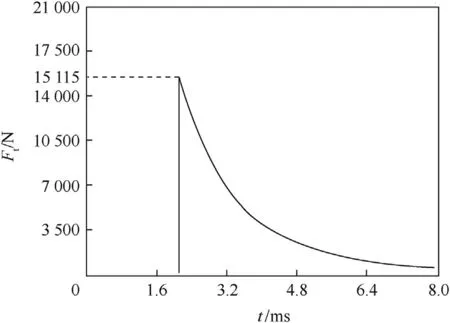
Fig.3.Curve of muzzle brake force with time.
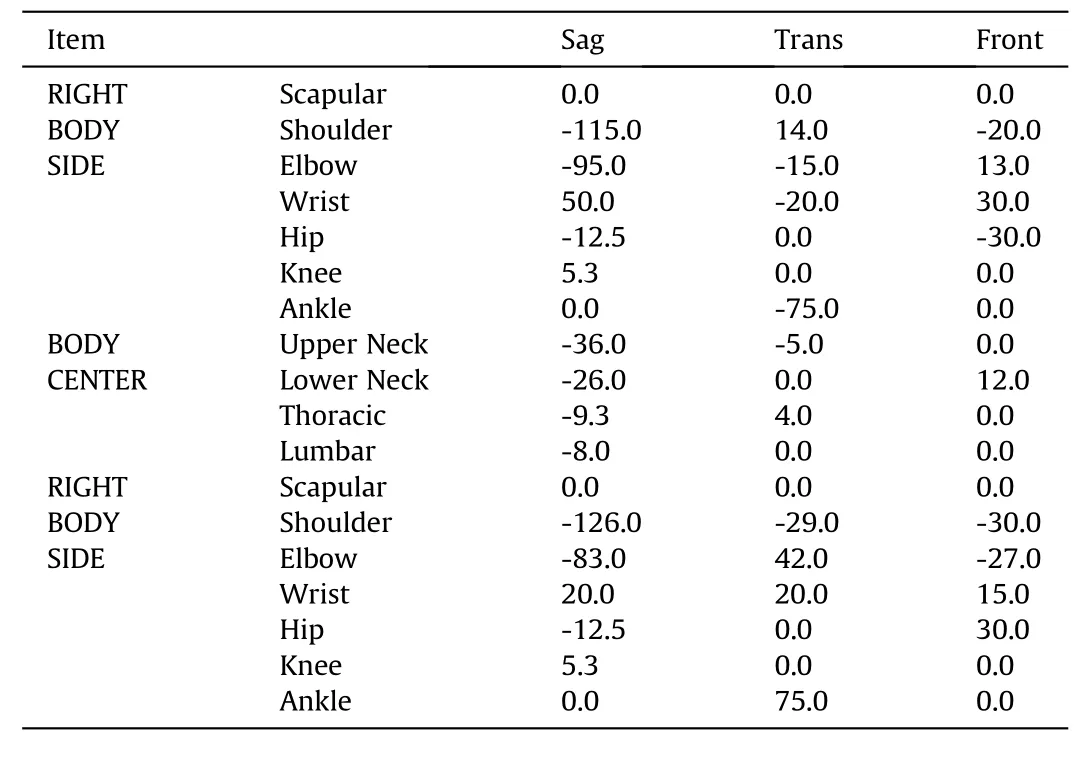
Table 3 Posture parameters of human body joints.
3.2.2. Establishment of human body model
During the firing process,the interaction between human body and the machine gun system has a significant influence on the dynamic characteristics of the weapon.In this paper,a human body model during firing process is established with the technology of VPD(Virtual Prototype Design)from LifeMod,[16,17].
The posture of the human body is adjusted to prone shooting position after importing the model into LifeMod.The shooting posture of shoulder-sustaining prone position is as follows:a shooter lies prone on the ground,with two vertical elbow holding the upper body;the right hand holds the grip tightly,and the left hand supports another small grip.With the two hands together,the gun stock is pressed tightly in the shoulder.In the meanwhile,the head tilts to the right side to make the cheek rubbing against the gun stock.At last,the lower part of the human body model is selected and translated to the shooting position.The posture parameters of human body joints are shown in Table 3.
3.3. Establishment of the rigid-flexible coupling model
In the actual firing process of the machine gun,the barrel and tripod mount are flexible.In order to improve the accuracy of simulation for a more realistic result to the actual situation,the rigid-flexible coupling model for machine gun is established,in which the barrel and the gun carriage are modeled as the flexible bodies.
The rigid-flexible coupling multi-body dynamic model of a new large caliber machine gun based on floating principle was established as shown in Fig.4.The dynamic model of the flexible bodies as shown in Fig.5.
4. Simulation results analysis and experimental verification
The velocity,bolt carrier velocity and the recoil of floating body vary with time are obtained by the simulation analysis of the established rigid-flexible coupling multi-body dynamic model at 0°firing elevation with 5 firing rounds,except for the recoil of one firing,as shown in Fig.6-Fig.8.
For comparison,the new large caliber machine gun was taken as the experimental object and the data are collected by the laser vibration system OFV5000 of POLETEK Company in Germany.The results are shown in Fig.9-Fig.11.
Table 4 shows some typical experimental data and simulation results of the bolt carrier velocity,the floating body velocity and the recoil of the machine gun in a running fire.By comparing the data in the Table 4,it can be obtained that the relative errors are less than 5%by comparing the maximum recoil velocity,the maximum counter-recoil velocity and the maximum value of recoil calculated by simulation analysis and experiments,which verifies the reliability of the established rigid-flexible coupling multi-body dynamic model.
5. Simulation analysis of machine gun performance with/without the floating technology
Automat,whose kinetic characteristics have the direct bearing on the stability of the whole system,is the key constituent element of automatic weapon.The automat of the new large caliber machine gun with the floating technology has more complex kinetic characteristics than common's.For the purpose of verifying the effect of the floating technology on the recoil and other performances,in this paragraph,a comparison was made to analyze the difference between the cases with/without the floating technology when firing at the horizontal firing elevation(0°).

Fig.4.The flexible multi-body dynamic model of some new large caliber machine gun.
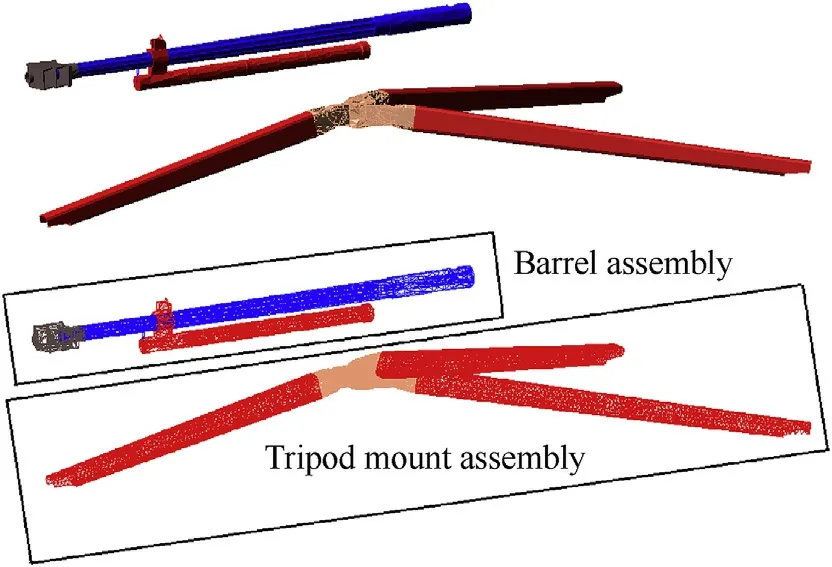
Fig.5.The dynamic model of the flexible bodies.
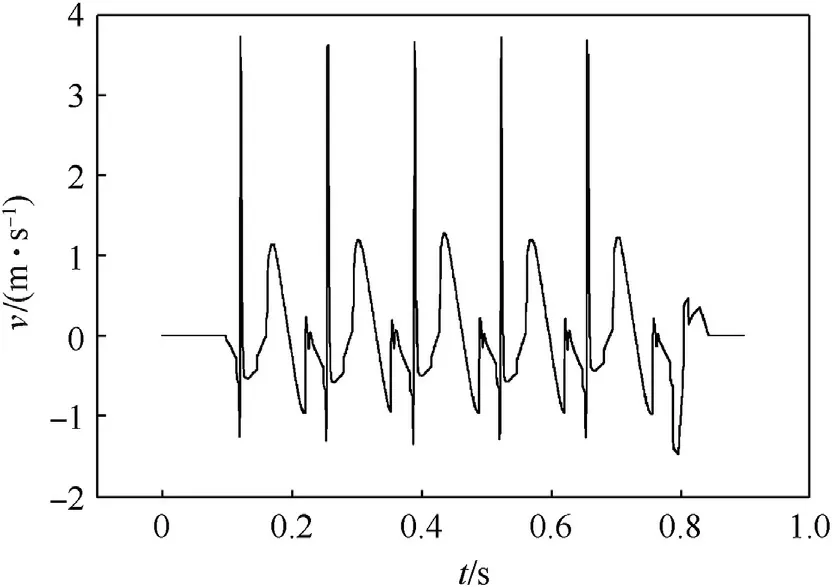
Fig.6.Simulation curve of floating body velocity considering muzzle brake force.
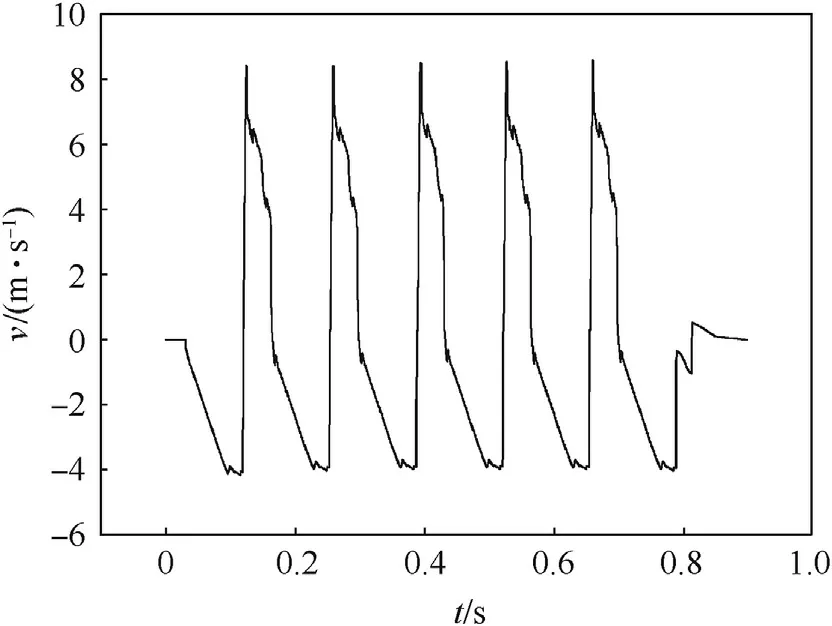
Fig.7.Simulation curve of bolt carrier velocity considering muzzle brake force.
The correlation curve of the recoil with/without the floating technology is shown in Fig.12 and a big difference between these two conditions can be found.In the case without using the floating technology,there is great recoil caused by the propellant gas in the barrel at the moment of firing(shown at mark 1).At the moment that the automation recoils in position(shown at mark 2),there is another recoil caused by the rigid impact.In the case of using the floating technology,the maximum recoil,caused by the impact between the bolt carrier and the floating body,is shown at the mark 3.It is calculated that the average maximum value of the recoil without the floating technology is 2.45 N but is only 730 N in the case using the floating principle.Therefore,it can be concluded that the maximum value is reduced by 70.20%and the floating mechanism is able to decrease the machine gun's recoil force effectively.
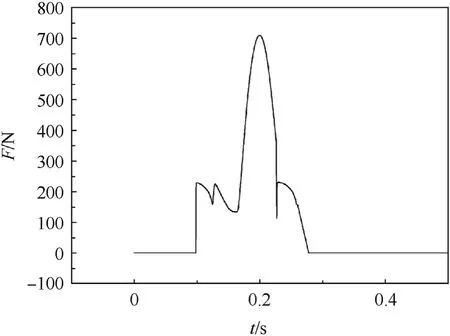
Fig.8.Simulation curve of recoil over time.
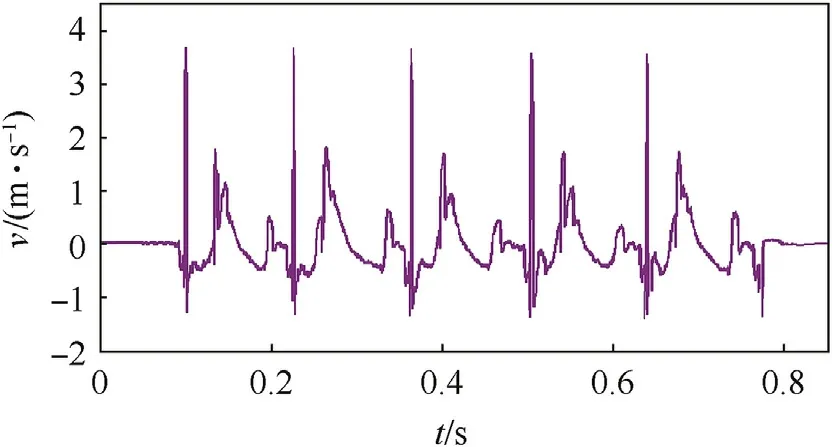
Fig.9.Test curve of floating body velocity.

Fig.10.Test curve of bolt carrier velocity.
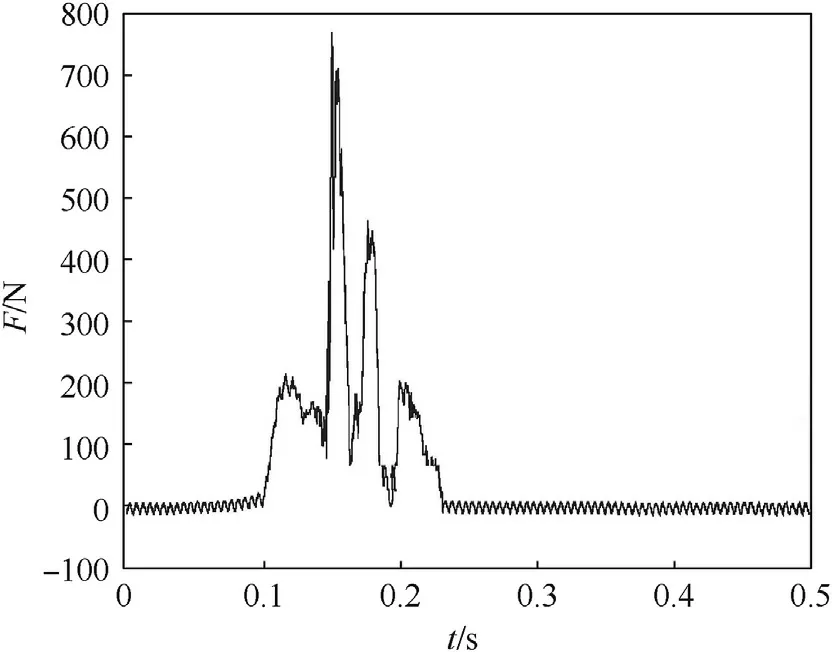
Fig.11.Test curve of recoil.

Table 4 Comparison between simulation and test results of floating body velocity,bolt carrier velocity and recoil.

Fig.12.Curve of recoil with/without the floating technology.
The curves of displacement and velocity of the floating body for the cases with/without floating technology are shown in Fig.13 and Fig.14.It is obvious that in the case without using the floating technology,the values of displacement and velocity are always zero,due to the fix of the floating body and external receiver.The data of each fire from the figure are extracted for a further study of the case using the floating principle,which are shown in Table 5.It is calculated that the mean square deviation of the displacement σyis 0.8808×10-3m and the velocity σ ˙y is 0.0342 m/s.According to the values of σyand σ˙y,it can be concluded that the displacement and velocity of each fire maintain a high consistency,which means the machine gun firing at fixed position and speed is realized.The maximum values of the floating body's recoil displacement of each fire are 0.0136 m,0.0119 m,0.0125 m,0.0127 m,0.0127 m,which are all within the limit of the recoil displacement 0.021 m and the same situation can be found for the counter-recoil displacement.Therefore,during the whole firing process,the working stroke of the floating body always lies between the displacement of recoil and counter-recoil for without floating automat, namely, the floating body keeps reciprocating motion within the floating stroke,which means that the floating fire is realized.

Fig.13.Curve of floating body displacement with/without the floating technology.
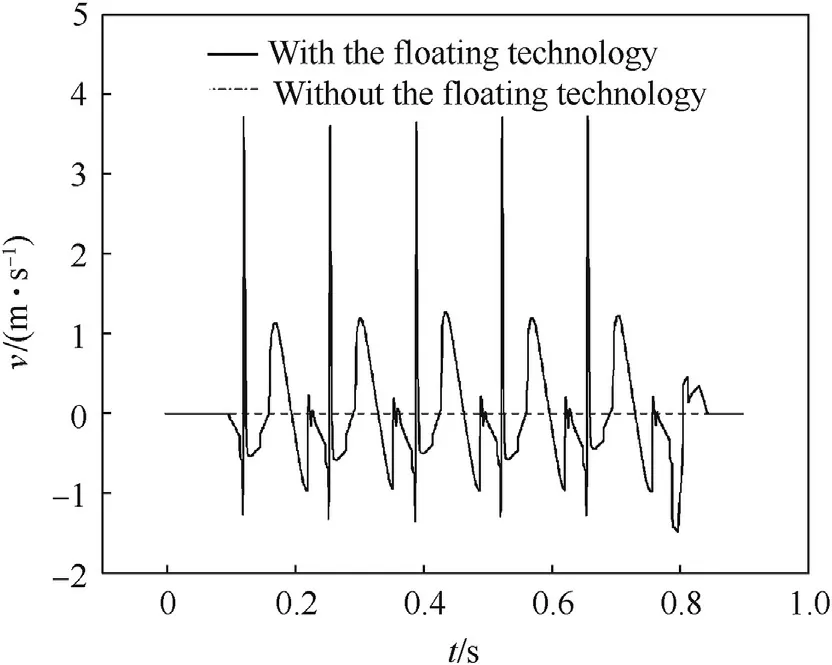
Fig.14.Curve of floating body velocity with/without the floating technology.
Based on the Fig.13,the relationship between the key position in the curves and the corresponding action of each mechanism in the shooting process is analyzed.When the frame of the gun release from the blocking iron,it begins to recoil under the force of the recoil spring.The gun body is released when the frame impacts on the left and right hooks at position 1 and starts to move forward under the force of floating spring.When it moves to position 2,the frame counter-recoils in the right place and the bullet is fired.The recoil force counteracts the forward energy of the gun body so as to reduce the first impulse and makes the body move backward to position 3 along with the frame.Then the gun body starts to move forward rapidly under the force of air-conducting reaction and muzzle restraint.When moving to position 4,it is impacted by the counter-recoiled frame and starts to move backward again,which can reduce the second impulse.At position 5,the gun body restarts to move forward by the force of the two-stage floating spring and finally stop moving at position 6 when the hooks are hung by the floating seat to wait for the next release by the gun frame.
6. Simulation analysis of floating performance at different firing elevations
The machine gun needs to shoot at different pitch angles according to the different battle environments.This produces a force component of the gravity along the barrel axis and leads to a heavy impact on recoil and counter-recoil movement of the floating body and automat.For the new large caliber machine gun studied in this paper,the theoretical scope of the quadrant firing elevation is 0°~50°.In this section the influence on the floating performance under different firing elevations is studied to investigate the stability movement of the machine gun.
The recoil curves of the machine gun under the firing elevations of 10°,20°,30°,40°and 50°are shown in Fig.15,and the average maximum recoilcalculated by the maximum recoil R of each firing at each firing elevation is shown in Table 6.The growing rateof the average maximum recoil with different firing elevations is determined by comparing with the value of 732.77 N at 0°,which was obtained by the simulation before.

Table 5 The performance data of the machine gun with/without the floating technology.
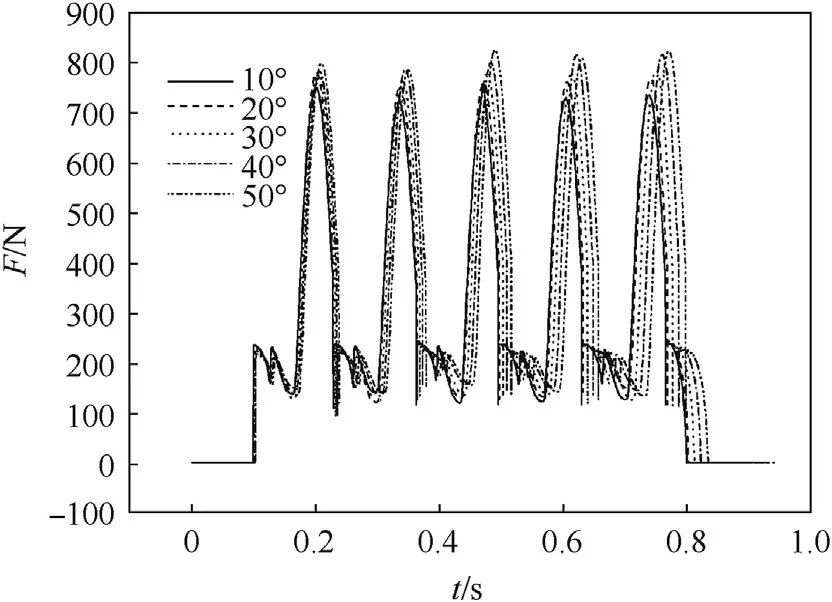
Fig.15.Curve of recoil at quadrant firing elevation over time.
The displacement and velocity of the floating body obtained by the simulation at different quadrant firing elevations are shown in Fig.16 and Fig.17.The maximum displacement of recoil counterrecoil extracted from the figure are shown in Table 6.As the firing elevation varies from 10°to 50°, the maximum recoil displacement has a continuous increase and the maximum counter-recoil displacement has a continuous decrease.But the maximum values do not exceed the limit value to ensure the floating body keep reciprocating motion within floating stroke,which is as same as the results at the horizontal firing elevation.
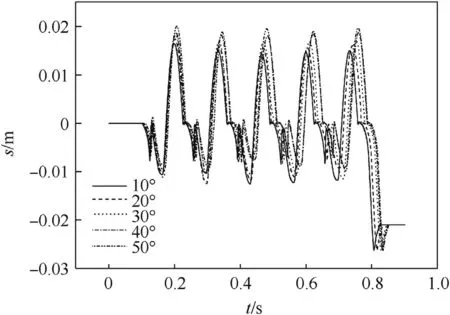
Fig.16.Curve of floating body displacement at quadrant firing elevation over time.
By extracting the mean square deviation of the displacement and the velocity of the floating body at firing as shown in Table 6,the values of mean square deviation of the displacement of the floating body at firing σyat quadrant firing elevation of 10°,20°,30°,40°and 50°respectively are 0.4719×10-3m,0.2847×10-3m,0.2046×10-3m,0.1646×10-3m,0.1857×10-3m,and the values of mean square deviation of the velocity of the floating body at firing σ ˙y under the same condition are 0.0150 m/s,0.0096 m/s,0.0332 m/s,0.0338 m/s,0.0141 m/s.It can be seen that σyand σ ˙y are all small,which means that the displacement and velocity of each fire maintain a high consistency,so that the machine gun realizes firing at the fixed position and speed very well.
7. Conclusions
In this paper,the rigid-flexible coupling multi-body dynamic model of a new large caliber machine gun with complicatedboundary conditions was established based on the designed floating scheme.The floating performance of the machine gun was studied by simulation analysis and the following conclusions are drawn:

Table 6 The performance data of the machine gun at different firing elevations.
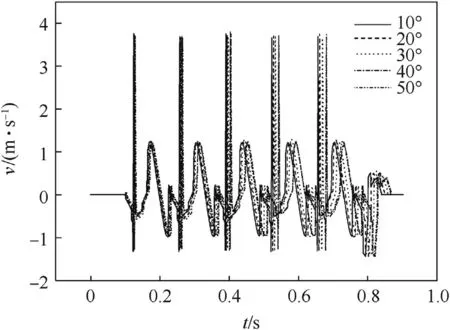
Fig.17.Curve of floating body velocity at quadrant firing elevation over time.
(1)The reliability of the established rigid-flexible coupling multi-body dynamic model was verified by comparing the results of simulation and experimental results;
(2)By introducing the measurement indexes,the floating performance of the machine gun with/without floating mechanism based on the verified rigid-flexible coupling multi-body dynamic model was analyzed by simulation and the results showed that the maximum displacements of recoil and contour-recoil are all within the limit value of rigid collision to realize the floating shooting which has a better stability.And during the firing,σyand σ·yare all small,which means that the displacement and velocity of each fire maintain a high consistency,so that the machine gun realizes firing at the fixed position and speed very well and in the meanwhile,the recoil impact force decreased by 70.20%.
(3)It can be concluded from the simulated results that the recoil force changes a little under the condition of different elevation angles with a stable floating performance.
Acknowledgements
This paper is supported by the National Natural Science Foundation of China under Grant No.11802138,China Postdoctoral Science Foundation under Grant No.2018T110503 and the Fundamental Research Funds for the Central Universities under Grant No.30918011302.
杂志排行
Defence Technology的其它文章
- Modeling on the shock wave in spheres hypervelocity impact on flat plates
- Insensitive high explosives:IV.Nitroguanidine—Initiation&detonation
- Effect of energy content of the nitraminic plastic bonded explosives on their performance and sensitivity characteristics
- Effect of wave shaper on reactive materials jet formation and its penetration performance
- A comparative study for the impact performance of shaped charge JET on UHPC targets
- The role of crystal lattice free volume in nitramine detonation
